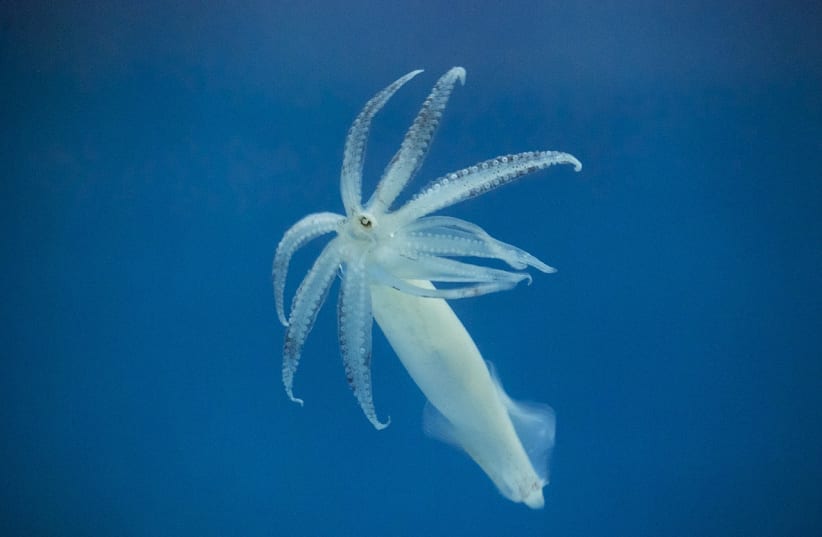Are you a sneaker or a consort? According to a recent study, your birthday determines how you will try to mate with a prospective partner—if you're a male squid.
Authored by Japanese researchers, the study explains that a male spear squid's (Heterololigo bleekeri) date of hatching is the determining factor in which mating tactic they will use for the rest of their life.
The findings of this study were published in the peer-reviewed academic journal Proceedings of the Royal Society B.
Your love life is predetermined (if you're a male squid)
Many people today—that is, humans—have found various metrics by which they can measure their compatibility with a prospective romantic partner. These include love languages, astrological compatibility, and the many question-and-answer statistics used by dating apps. Humans have even developed a number of relationship styles, from monogamy to polygamy.
This extends to mating strategies, which show how humans try to find, secure, and mate with a partner. A vast number of factors are taken into account, but ultimately, it boils down to finding a mate and courting them, such as by dating or flirting.
But humans are more sophisticated than many other animals, and dating is far more complex than it may seem from the outside.
By contrast, squids only have two mating styles: Sneakers and consorts.
Most people think of consorts when they think of animal mating practices. These are the males who fight each other, battling to be the one who gets to reproduce with the female squid, fertilize her eggs, and then guard her while she lays those eggs.
Sneakers take a far more underhanded approach to reproduction. Instead of fighting for the right to have offspring, these squids discreetly sneak over to the females and place their sperm inside the squid, with the hope that it will fertilize the eggs if the consort hasn't already done so.
So why are some squids consorts and others sneakers?
A very obvious difference between the two is size. Consorts are larger and can compete with other males. Sneakers, however, are much smaller. Despite this, the size ratio is reversed when it comes to sperm size, with sneakers producing larger sperm than consorts, as previous studies have shown.
This binary of sneaker and consort seems very definitive, with transitioning from one to the other not thought to be possible. But what exactly determines if a squid will be a sneaker or a consort?
Scientists theorized that birth dates play a role in determining the mating tactic. This is because the spear squid breeding season is long, which gives more time for environmental factors impacted by the seasons to affect these squids.
This has been backed up by prior research on other species, which found that their body sizes could differ as a result. But these had only been tested in fish and not in something like squids.
So now, researchers sought to do exactly that. They analyzed over 350 different squids between 2020 and 2023 during the breeding seasons and observed them during the mating season. Overall, they were able to observe 201 male spear squids: 38 sneakers, 97 consorts, and 66 immature males.
The ages of the squid were determined by analyzing a statolith, a part of the squid's body that helps maintain balance. The statolith can be used to measure the squid's age by counting its layers, similar to how scientists can determine a tree's age by counting the rings.
What they found was that the date of birth for these squids absolutely impacted their mating strategies, with squids born earlier – between early April and mid-July – growing larger and becoming consorts, while squids born later – between early June and mid-August – becoming sneakers. This is because the early-born squids will have time to grow larger come the breeding season, whereas the late-born squids will be smaller and thus would become sneakers.
"Our results showed that the hatching date determines the whole life trajectory in this species," Yoko Iwata of the University of Tokyo's Atmosphere and Ocean Research Institute said in a statement. "The difference in hatch date means that the squid experiences different environmental conditions in early life, which may influence the growth trajectory. If an extreme environmental event, such as an ocean heat wave, happens during the hatching season, it could affect the squid's mature body size and subsequent mating tactics. This would also impact the amount that could be commercially caught enormously."
Still, there is more to this mystery than just birth dates. Researchers had expected that the squids would grow at different rates depending on water temperature or other environmental conditions. But both consorts and sneakers grew at similar rates early in life. So, something else needs to be impacting squid growth and reproduction methods. But what could that be?
Scientists aren't sure yet, but the answer may reside in the statolith, as the layers contain traces that can help inform us about the environmental conditions at the time.
Hopefully, the answer to this will "sneak" up on us, too.

